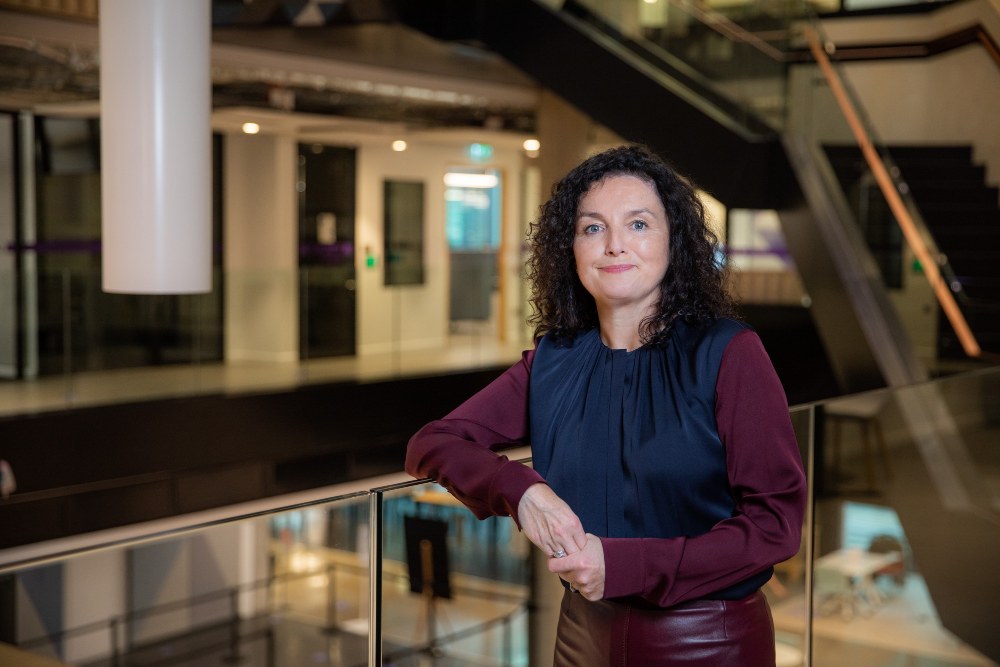One-to-two days remote per week most common amongst hybrid workers globally, according to the latest EY Mobility Consumer Index.
Hybrid work is becoming embedded globally with the structural shifts in work caused by Covid-19 enduring as the pandemic recedes, according to the latest EY Mobility Consumer Index.
The index also finds that offices and workplaces are gradually becoming busier, leading to a noticeable increase in public transport usage.
“Latest public transport numbers indicate that the return to office-based work is certainly increasing with many employers and employees seeking more opportunities to bring their teams together to collaborate as well as integrate new colleagues”
According to the global index of over 15,000 people in over 20 countries, more than half (52%) of workers report some form of hybrid work – up significantly from the one in three (33%) reporting hybrid work pre-pandemic.
For those working in a hybrid manner, one-to-two days remote per week was the most common arrangement (almost 50% of remote workers surveyed), as hybrid norms begin to stabilise.
Rebound in public transport
The increase in office-based working is also leading to a rebound in Public Transport usage with 62% of workers and students now availing of public transport for work on a monthly basis, up 4% since the 2022 survey, while public transport usage for non-work activities is up 3% to 37%.
Reliability and convenience have emerged as top concerns while safety and hygiene are increasingly on the backburner as the pandemic recedes into the rear-view.
“The trends noted in EY’s Mobility Consumer Index are similar to what we are seeing play out in Ireland,” said Julia Ann Corkery, Partner, EY Ireland Government and Infrastructure Advisory.
“Latest public transport numbers indicate that the return to office-based work is certainly increasing with many employers and employees seeking more opportunities to bring their teams together to collaborate as well as integrate new colleagues.
“Ireland is an outlier internationally in that public transport usage is now higher than it was pre-Covid-19. This trend is driven by the fact that unlike other countries during the pandemic, Ireland not only maintained but invested in, and substantially grew its public transport network, as well as its walking and cycling infrastructure. The introduction of a series of fare reduction schemes have also made an impact, making it a much more cost-effective and efficient transport option for everyone.”
“Interestingly the use of public transport has also increased outside of the working week as more people, in particular families, avail of public transport services for leisure travel.”
The EY Mobility Consumer Index (MCI) is an annual study of over 15,000 people globally, providing unique insights on the shifts witnessed in travel patterns and mobility mix in the post-Covid-19 world.
“We can see that flexibility remains to be of significant importance to our workforce, with varying forms of hybrid working enduring across all sectors,” Tim Bergin, EY Ireland People Consulting Partner.
“Organisations are developing a more mature understanding of how to use workspaces effectively to support collaboration and relationship building, to make trips to the office worthwhile. Ultimately, the focus is on creating a great experience that can span multiple locations and create cohesion and belonging, as opposed to the wholly remote working arrangements which were prevalent during Covid-19 and which sometimes led to a sense of disconnectedness. And underpinning all of this must be a clear focus on sustainability, inclusion and societal care, which is of increasing importance to younger generations joining the workforce and which can be seen by rising preferences for public transport.”
The report highlighted the popularity of public transport and multi-modal travel among Gen Z and Millennials
The report also highlights a focus on multi-modal travel, with Gen Z and Millennials more inclined towards this option. While shared-mobility increasingly complements public transport, the use of micro-mobility devices such as e-bikes, electric scooters, shared bicycle schemes, is gaining attention in many countries.
“The report highlights how Gen Z and Millennials increasingly choose public transport over private car travel,” said Corkery.
“The cost-of-living crisis may be a partial explanation here, but trends and surveys indicated that these generations are also acutely conscious of their carbon footprint and more open to multi modal transport.
Ireland is perhaps not as far along in terms of the use of micro-mobility devices as other countries, but e-bikes, electric scooters and shared bikes need to be carefully considered as part of our future planning. The signing into law of the Road Traffic and Roads Act 2023 recently paves a way forward for how personal powered transporters (e-scooters) will be regulated and used in Ireland. This is a positive move from government in planning and managing how micro mobility plays a role in the transport ecosystem.
“More broadly, we have made significant in-roads in developing and investing in our public transport system over the last three years. It is important that we maintain this momentum to improve access to education and employment and will ultimately enhance all of our lives in the long run.”
Main image: Tim Bergin, EY Ireland People Consulting Partner, and Julia Ann Corkery, Partner, EY Ireland Government and Infrastructure Advisory. Background image by Bart on Unsplash











